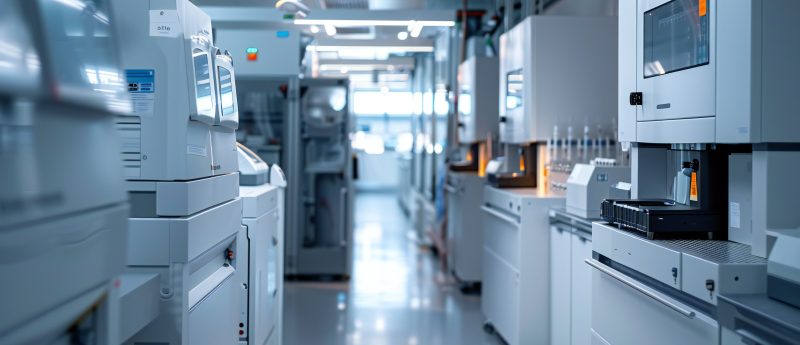4. Advantages of LC–MS for the bioanalysis of biologics

As part of our Ask the Experts feature, we find out the advantages of LC–MS approaches for the bioanalysis of biologics compared with other techniques.
Compared with other techniques, what are the advantages of using LC–MS for biologic quantification?
Chad Christianson (Alturas Analytics)
Historically the quantification of biologics has primarily been conducted using ligand-binding assays. These assays are very sensitive, but the accuracy of the reported concentration data submitted for regulatory approval may be called into question due to the inherent selectivity issues prevalent in these assays. LC–MS analysis (retention time and mass specific) of biologics coupled with proper sample preparation provides data that is not as susceptible to selectivity challenges.
Matthew Ewles (Covance)
This is a tough question, because it depends a lot on the nature of the molecule, the requirements of the assay and the questions being asked. For some molecules, a ligand binding assay will remain the best choice. However, for many biologics, LC–MS may offer improved or alternative selectivity versus ligand binding assays. For example, quantitative discrimination of an oligonucleotide from its M-1 metabolite, or a therapeutic protein from an endogenous analogue (e.g. insulin analogues versus endogenous insulin) or to study biotransformation are examples of where the mass selectivity of LC–MS offers a solution that a ligand binding assay might not.
An LC–MS assay might enable quantification without critical reagents, it could also offer larger dynamic assay ranges, and so might be a more appealing technique over ligand binding assays, particularly in early preclinical development or screening. The sensitivity of ligand binding assays remains superior to LC–MS in most cases, but that sensitivity isn’t always needed. I prefer to see LC–MS/MS as providing an orthogonal solution with ligand binding assays, and the choice of technique should be driven on a molecule-by-molecule scientific basis.
Wenying Jian (Janssen Research & Development)
There are several advantages of LC-MS for biologic quantification over ligand binding assay (LBA) which is the traditional and still the mainstream bioanalytical platform for large molecules. First of all, mass spec detection provides superior selectivity because it is based on mass detection and can differentiate species with small differences in molecule weights which may have cross-reactivity in LBA. Secondly, unlike LBA, LC–MS typically does not rely on a specific reagent. In the case when immuno-affinity capture is required for LC–MS, only one antibody instead of two or more is required and the specificity of the antibody does not need to be as high as that of LBA because LC separation and MS detection can each provide specificity. Thirdly, an LC–MS assay is usually faster to develop, typically taking days to weeks, while antibodies for a LBA may require months to raise. Fast assay availability is particularly critical in the discovery stage when biologics of different sequence/structure modifications are being tested and specific antibodies may not readily available. In addition, LC–MS provides structural information and therefore is unique in its capability to elucidate protein isoforms, post-translational modifications, biotransformation and so on. There are also some other advantages of LC–MS, depending on the assay configuration, such as flexibility for multiplex to simultaneously monitor multiple analytes, larger linear dynamic range, being less susceptible to matrix interference and relative ease to transfer between matrices of different species.
Carsten Krantz (Novartis)
Generally, large molecule LC–MS/MS has the advantage of high selectivity, their ability for multiplexing and short development times. Biologics can be quantified in the so-called bottom up approach involving the digestion of the protein into small peptides and analyzing surrogate peptides or through the top-down approach where the biologic is quantitated in its intact nature using high-resolution mass spectrometers.
Bottom up approaches have been used frequently since they can make use of triple-quadruple mass spectrometers, which are highly sensitive and the workhorse for small molecule quantitation. Using bottom-up approaches whole digests in plasma/serum can be conducted without further requirements. The only reagents that are needed are isotope labeled internal standards which are often synthesized peptides. Besides selectivity, another advantage is the capacity to multiplex which could mean for instance parallel monitoring of PTMs, various peptides of the same protein across related isoforms or totally unrelated proteins (e.g. simultaneous monitoring of drug and target). As an example we have successfully quantified a therapeutic protein with multiple peptides and could determine the susceptibility of one terminus for protease degradation, something which required multiple tool antibodies and several assays with ligand binding assays [1].
Top-down approaches on the other hand provide structural information that go beyond the binding epitope in a ligand-binding assay. Here the molecule can be quantified simultaneously with the detection of potential catabolic sites (e.g. cleavage sites) or biotransformation hot spots (e.g. covalent modifications that influence the kinetics or the binding). Especially for complex molecules like antibody-drug conjugates (ADC) these methods have high potential as they combine characterization of the drug-to-antibody ratio (DAR) with quantitation of the ADC [2].
If sensitivity requirements increase, both bottom-up and top-down approaches can be combined with a capture step that enriches the protein to enable quantitation by mass spectrometry. These hybrid assays (or Immuno Affinity Capture, IAC) are very attractive, since they combine the best of both worlds, high affinity and specificity of the capturing reagent that results in significant enrichment combined with high selectivity of the mass spectrometer [3].
References[1] Krantz C, Treton G, Garnier A et al. Multiplexing LC–MS/MS to elucidate the behavior of a therapeutic protein and its metabolites in preclinical and clinical studies: Poster presentation at 8th Workshop on Recent Issues in Bioanalysis (WRIB); Universal City, CA, 10–14 March 2014.
[2] Jin W, Burton L and Moore I. LC–HRMS quantitation of intact antibody drug conjugate trastuzumab emtansine from rat plasma. Bioanalysis, 10(11), 851–862 (2018).
[3] Kang L, Camacho RC, Li W et al. Simultaneous catabolite identification and quantitation of large therapeutic protein at the intact level by immunoaffinity capture liquid-chromatography–high resolution mass spectrometry. Anal. Chem. 89(11), 6065–6067 (2017).
Keeley Murphy (Thermo Fisher Scientific)
While immunoaffinity-based quantification techniques have the potential to effectively leverage speed and sensitivity requirements, LC–MS quantification will often provide vast improvements in specificity for target detection, through both chromatographic separation and m/z identification. With advances in mass spectrometer design and sensitivity improvements, as well as dramatic increases to the resolving power of high-resolution accurate mass systems, new analytical methods are continuously pushing the boundaries for assay specificity and detection limits. Another important consideration when exploring the most appropriate approach for biologic quantification would be the availability of a suitable immunocapture antibody for the desired biologic target. In some cases, a selective antibody that meets ligand binding assay requirements may not be readily available, requiring additional development time and resources to provide assay support. When challenged with such a situation, LC–MS quantification may provide an advantageous choice to support rapidly evolving and high priority projects, particularly in the earlier stages of development where the time requirement for antibody development may not fit within project timelines.
The opinions expressed in this feature are those of the authors and do not necessarily reflect the views of Bioanalysis Zone or Future Science Group.






